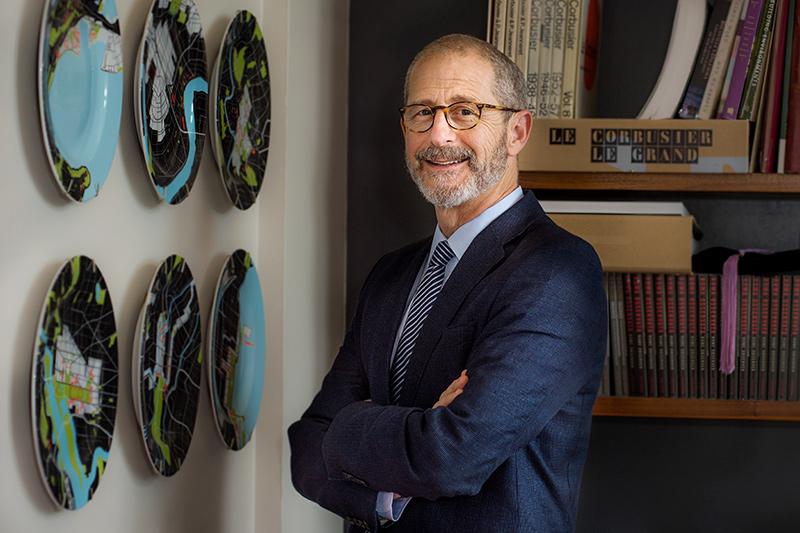Architecture dean leaves legacy of social change
When Kenneth Schwartz arrived at Tulane University in 2008, the School of Architecture was re-energizing after Hurricane Katrina and showing “a lot of momentum, and a lot of positive energy and goodwill in the community.”
The time was right for the new dean and professor of architecture to keep the school on the upswing. Over the next 10 years, the school achieved its highest ranking, improved alumni engagement and saw record fundraising. Its affiliate, Tulane City Center, grew into the Albert and Tina Small Center for Collaborative Design, and another universitywide affiliate, the Phyllis Taylor Center for Social Innovation and Design Thinking, launched in 2014.
“We’re involved with building community, and toward that end, architecture is more than just physical design,” said Schwartz, who also holds the Michael Sacks Chair in Civic Engagement and Social Entrepreneurship and is the founding director of the Taylor Center. “Those are among the many things we focused on for my first five or six years as dean and to this day as well.”
“We’re involved with building community, and toward that end, architecture is more than just physical design.”
Kenneth Schwartz
After 10 years of service to the university and multiple successful projects, Schwartz will step down as dean in May to make way for new leadership, leaving behind a legacy of social change.
“In the last 10 years we have diversified our small school in ways that have spread our influence across a number of disciplines that intersect with architecture and are also very important to society,” Schwartz said.
Under his tenure, the School of Architecture launched its Master of Sustainable Real Estate Development degree, a Real Estate Summer Minor Institute and the Taylor Center’s minor in social innovation and social entrepreneurship, which attracts students from all over campus.
After a yearlong sabbatical, during which he will focus on research projects related to social change and civic engagement, Schwartz said he will return to campus as a faculty member in the School of Architecture and will continue as the Taylor Center director. Schwartz added that it was a privilege to serve as dean and director at the same time over the past four years.
“Handling these two different jobs has been synergistic in a way,” Schwartz added. “It seems like a good time, after 10 years as dean, to shift focus more intensively on issues that can lead to positive change through the work of the Taylor Center.”

